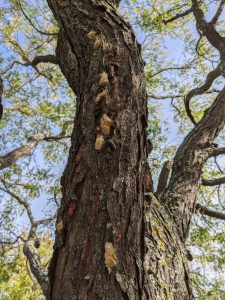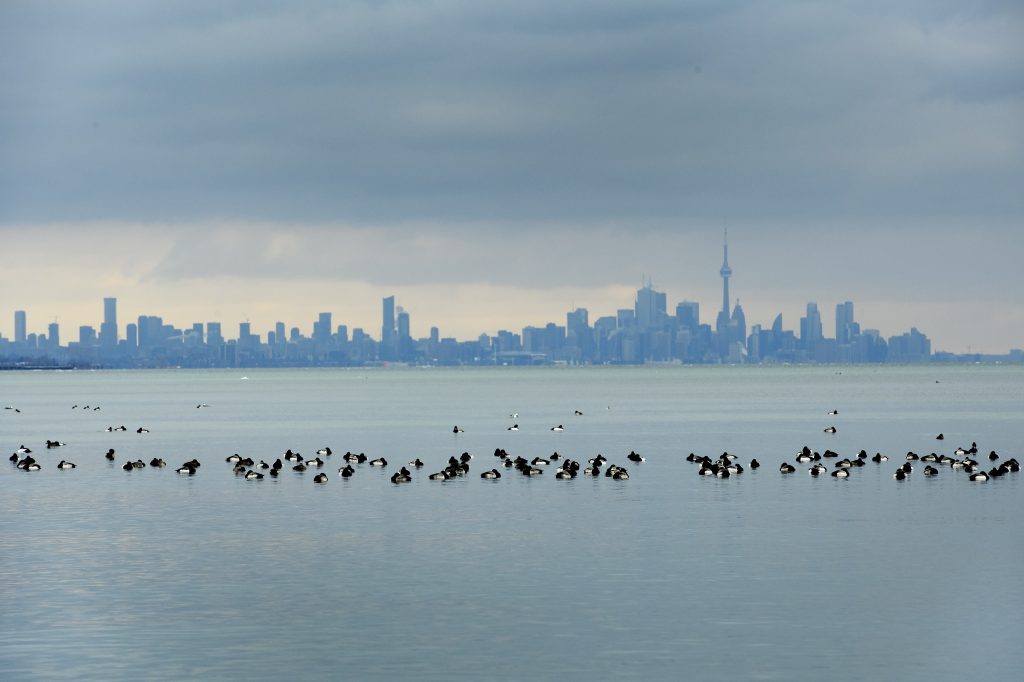Annual tree defoliation by gypsy moths tripled in 2021, and 2022 could be just as bad

Posted November 17, 2021 5:13 pm.
Last Updated November 18, 2021 3:11 pm.
As gardeners and naturists dealt with an invasion of gypsy moth caterpillars across parts of Ontario this year, new data shows tree defoliation in 2021 eclipsed activity in 2020 by nearly three times.
Although the official forecast for 2022 isn’t expected to be released until some time in December, there’s emerging concern about the same level of damage being repeated next year.
According to data by the Ontario Ministry of Northern Development, Mines, Natural Resources and Forestry, approximately 1.7 million hectares of lands with trees and green spaces saw defoliation.
David Dutkiewicz, an entomology technician with the Invasive Species Centre based in Sault Ste. Marie, told CityNews on Wednesday the size of the land that’s estimated to have been affected is bigger than all of South Korea. For comparison, he said in 2020 there were roughly 580,000 hectares of defoliation.
RELATED: Bug experts seeking new name for destructive gypsy moths
“We’re talking about an infestation, defoliation, damage the size of a … country,” he said.
“It’s really sort of shocking. I thought last year with under 600,000 hectares of defoliation is super high, we’ve never had that in Ontario’s history ever, and this year blew that out of the water.”
Dutkiewicz said there are areas with natural biocontrol agents (e.g. viruses, a fungus etc.) that work to keep the population of insects, but hasn’t reached the level of control needed to contain the insects yet. Experts said the level of insects typically rise and fall over a multi-year cycle.
While the caterpillars primarily strip the leaves off of deciduous trees, healthy trees with plenty of sugar storage in the roots can survive the onslaught of the insects for three to five years.
But Dutkiewicz said at the current levels the caterpillars can move on to coniferous trees like white pine and blue spruce. He said since those trees keep sugar in the needles, those can die off within a year.
RELATED: Hungry caterpillars stripping trees in Quebec, Ontario and on Montreal’s Mount Royal
A City of Toronto spokesperson told CityNews municipal staff have seen the number of moths rising in the past few seasons and moving into new areas. However, they added the outbreaks were contained to smaller, isolated areas mostly in the north and east ends of Toronto.
Officials noted more than 30,000 trees owned by the City of Toronto were inspected and egg masses were removed from nearly 4,400 trees. Also, there were almost 500 tree injections and more than 80 areas where ground spraying occurred.
Looking ahead to next year, municipal and provincial governments will be releasing data, forecasts and response plans over the coming months. However, the City of Quinte West (Trenton, Frankford and other nearby communities) recently received a consultant’s report that said the municipality should prepare to see overall “widespread, pretty severe defoliation next spring.”
Dutkiewicz said there could be similar levels of the insects in 2022 and while it won’t make a huge difference in terms of the overall situation in Ontario, he encouraged residents to scrap any egg masses (typically white or brown clusters) off trees with a knife and place those in soapy water for three days in an effort to reduce the amount of damage and better protect their properties next year.

Gypsy moth eggs are seen on a tree. INVASIVE SPECIES CENTRES / Handout / David Dutkiewicz








